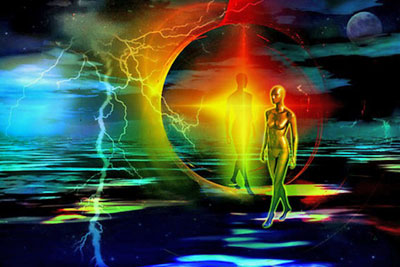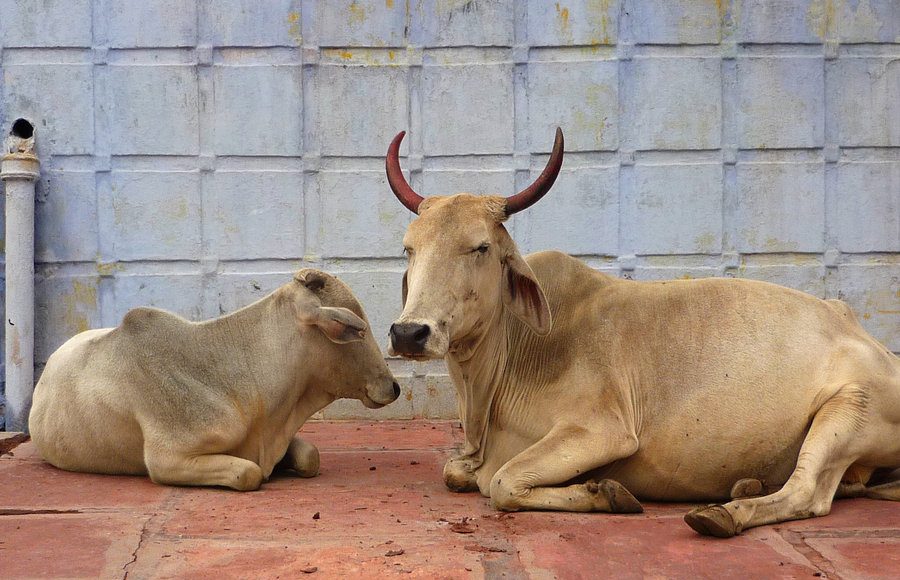Translate
Monday 27 January 2020
Sumerian and its Tamil Connection - A Review
Article published in International Journal of Tamil Language and Literary Studies at the link below:
http://ijtlls.com/data/uploads/january-2020/21.sivakumar-ramakrishnan.pdf
Saturday 11 January 2020
The Tamil Hermeneutics and Metaphysics - Part 20
The Limits of Reason

ULLAGANAR
( editing and re-paragraphing by his student )
( picture taken from https://www.dingtwist.com/ with thanks )

Thinking especially the disconstructive form has a place in tempering the emotions or in other words reason must be promoted to temper the passion of emotions. We must always remember our psycho-emotional make-up - both reason and emotions are important - a balance should be preferred.
This is a huge problem, that of tempering and culturing the emotions and for which purpose Agamism cultivates the fine arts as an integral part of Temple Culture that we see so abundantly even in Sumerian culture.
The music and dance , certainly of various qualities, can be tuned to become an art that refines the mind and purifies the soul. All goes to show that AESTHETICS is more fundamental than REASONING including even the dialectical and disconstructive varieties. Deep inside the heart of all there is a need for being BEAUTIFUL psychically and this brings in the dimension of CUTTAM, that of being CLEAN and which means being FREE of dirt. This notion is also available in all other religions sucxh as in the form of 'paricutta aavi", the "genuinely pure soul" and so forth.
But becoming PURE or Cuttam is something, more than aesthetics, more than what can be attained by merging the soul with the mantric melodies of dance and music. And it is here that I see the metaphysical relevance of SUFFERING as such and the consequent Tiikkai , the inward burning or tapas that siege the dirt within as highly relevant.
We suffer all kinds of mishaps in the world. The world process contains within itself elements that induce tremendous PAIN and ANGUISH in our heart . In the ancient times there was the Deluge in which only Jivasudra ( Noah) survived. And throughout world history there were wars and wars and recently the first world war, the second world War and now the Third World War of a peculiar kind -- barbaric and inhuman terrorism arising from some kind of fanaticism. Certainly there will be a retort, a reply causing further bloodshed along with reducing many countries into desolate landscapes and the world process continues thus and it has done so in the past. Such events along with natural disasters, diseases, dry spells, earthquakes and so forth generate PAIN and ANGUISH in the heart of all, even among hard hearted.
Appar returned to Saiva way of life after his misadventure into Jainism and what brought him back is the excruciating PAIN and ANGUISH that he suffered on the onset of what he calls Cuulai Nooy, a kind of disease that burns the intestines and made him fall to the ground and cry out with unbearable PAIN and suffer also ANGUISH in the face of impending death.
Such events in the personal life of individuals and world history are metaphorically understood as the Dance of Destruction of Civa as Rudra, or Civa as KoRRavai, the Kul-kul-amma of the Sumerian times.
But what is the metaphysical significance of PAIN as such? Of tremendous mental ANGUISH as such?
The mind can trap itself in FALSE METAPHYSICS, the metaphysics of mental creations and which are attempts at RATIONALIZING and JUSTIFYING one's own DESIRE , or borrowing a term from Nietsche, as expressions of WILL to Power. There is a tendency in all of us to be aggressive , defeat all others and become the HERO who is worshipped by all, expressed collectively and individually. Tolkaappiyar would put this kind of tendency as one that falls within the Paalaith ThiNai, the ThiNai of desert landscape, the interior ecology that inclines one towards DESTRUCTION and turning the world into a desert both physically and psychologically.
We should view the function of unbearable pain, the fear of death and the anguish that it generates against this background of various kinds of false metaphysics within which man can trap himself. For PAIN and so forth cannot be wished away, one cannot conclude that they are just Mithya Jnaanam, Aroopitam, mental projections and addhyasa, superimposition and supremely inconsequential. The unbearable pain and immense melancholy that swells the heart in the face of disasters PULLS us away from WISHFUL thinking and enclosing ourselves within all kinds of false metaphysics. It forces us to acknowledge REALITY and think about it as it is, understand the world as it is from within itself, as it shows itself from within itself i.e. objectively - uLLatai uLLavaaRu kaaNal, as said in Tamil.
This ushers in thinking hermeneutically and phenomenologically - that of seeing the world as it is and understanding as to why it is so especially about the presence of PAIN producing events as part of the world process. And it is in the course of such thinking that man discovers the presence of EVIL in the world, the dark demonic forces in the world AND in oneself. This insight is most consequential for from the burst of this understanding man begins to see that he is a real filth, a very lowly kind of person, capable of all kinds of evils and that he can rescue himself only by seeking the presence of BEING within. For only BEING, assuming various types of the destructive archetypal forms can destroy the demonic and devilish forces within oneself and in the world. This realization makes us really humble by making us egoless. Not only that - it makes us OPEN up the heart for the engracing blessings of BEING and in order to be fit for it, become PURE at heart.
It is this point that bakthi bursts forth and establishes existence. I must mention here that bakthi is really very ancient and integral to all human beings. The extremely beautiful metaphysical poetry of Enhudu Anna, Sirbiyam ( 2200 B.C.) is one of the most beautiful bakthi poetry to have come from the ancient world. The Agamism is founded upon and fosters Bakthi. The sacred lore of the Tamils, from the Cangkam Paripaadal to Theevaram , Divviya Prabantham and so forth are perhaps the very excellent expressions of genuine bakthi.
It may be possible that what is called FAITH in other belief systems is the same as Bakthi in Hinduism. However I am not sure, despite this possibility, whether there is a complete overlap of meaning. For genuine bakthi is one of the products of UNDERSTANDING and hence disconstructive thinking. It must be recalled here that genuine disconstructive thinking does NOT have other authorities except that of TRUTH, it does not have any scripture as solely authoritative for if it does, disconstructive thinking cannot be practiced everywhere.
ULLAGANAR
( editing and re-paragraphing by his student )
( picture taken from https://www.dingtwist.com/ with thanks )
Tuesday 7 January 2020
The Psychoanalysis of Appar - Part 11 ( Final )
Siva and Sakti are Always Together

This is the final verse of this patikam of profound psychological significance and which goes to the very roots of animal and human sexuality without any feelings of abhorrence, revulsion etc. That sexuality of creatures is a GIFT of BEING and that existence itself is meaningful and enjoyable only because of that is clear. Appar sees or led to see the Dance of Bliss of Siva and Sakti at the depths of all sexual activities and this is that which leads him to extol that he has been graced by BEING with an understanding that is so rare and difficult.
But having seen this, he also hopes to see a moment when Siva and Sakti stand separated and hence there being NO sexual passions of whatever kind in the bosom of all creatures. It is a possibility but reserved only for the rishies as KantapuraaNam (and many other puraNas) would affirm. But this is not yet for Appar -he fails to see the moment Siva and Sakti remain separate having severed their union. As far as Appar goes, both are inseparable - where Sakti is Siva is and vice versa.
11.
வளர்மதிக் கண்ணியினானை வார்குழ லாளொடும் பாடிக்
களவு படாததொர் காலங் காண்பான் கடைக்கண் நிற்கின்றேன்
அளவு படாததொர் அன்போடு ஐயாறு அடைகின்ற போது
இளமண நாகு தழுவி ஏறு வருவன கண்டேன்
கண்டேன் அவர் திருப்பாதம் கண்டறியாதன கண்டேன்
உரை:
இளம்பிறையாகத் தோன்றி வளர்பிறையாக முதிரும் இளந்திங்களை சிரசில் கண்ணிமாலையாகச் சூடி சந்திரசேகரனாகத் தோன்றும் இறைவனை, இளம்பெண்களுக்கு வனப்பு தரும் கரிய நெடிய கூந்தலைத் தரும் உமையம்மோடு இணைத்துப் பாடியவாறு, யாண்டுமே களவு பட்டு இணைந்தே இருக்கும் இவ்விருவரும் களவு படாது பிரிந்திருக்கும் ஓர் காலமும் உண்டென நினைத்து அதனைக் காண்பான் இறுதியான ஓர் முடிவோடு நிற்கின்றேன். இவ்வாறான சிந்தையில் இவ்விருவர் மாட்டும் அளவுபடாததோர் அன்பொடு ஐயாறு அடைகின்ற போது, என் எதிர்ப்பார்ப்புக்கள் எல்லாம் வீணாகுமாறு இளமண பசுக்களைத் தழுவியவாறு வீரக்காளைகள் பல வருவன கண்டேன். அதுபொழுது ஊனக் கண்ணால் காண்டற்கு அரிதாகிய சிவபெருமான் நாதவிந்துக்களை பெண்ணென ஆணென உயிரினங்கள் எழுமாறு அசைத்தாடும் ஆனந்தத் தாண்டவத்து திருப்பாதங்களை ஞானக்கண்ணிற் கண்டேன்; அதுவரையிலும் நான் கண்டறியாதிருந்த ஆழ் உண்மைகளைக் கண்டு மகிழ்ந்தேன்.
11.
vaLarmatik kaNNiyinaai vaarkuza laaLodum paadik
kaLavu padaatator kaalaG kaaNpaan kadaikaN niRkinReen
alavu padaatator anbodu AiyaaRu adaikinra pootu
iLamaNa naagu tazuvi eeRu varuvana kaNdeen
kaNdeen avar tiruppaatam kaNdaRiyaatana kaNdeen
Meaning:
There is Siva appearing as Candrasekaran wearing the growing Crescent Moon on His head as an ornament and Uma with Him as the One who blesses women with long flowing hair that stimulates sexual feelings. Singing both of them I stood with the final resolve to see them not together in union but separately standing alone, I came to AiyaaRu with boundless LOVE for them. And there on way I saw, destroying all my hopes the virile bulls coming embracing with love the young and beautiful cows. At that point I saw with my mental eyes, the Divine Feet of Siva, (where he creates the male and females of all species with agitating the Natam and Bindu). Thus I saw what are impossible to witness with the fleshy eyes alone.
Comments:
The most important phrase here is ‘kaLavu padaatatoor kaalam” and which means the times when Siva and Sakti are NOT in union, in sexual embrace i.e. kaLavu. Appar notes that it is possible for Siva to depart from Sakti and becoming the Mahayogi, teach Njanam to the rishies who have overcome the sexual desires. Thus it is a possibility for all to be Maha Yogies and hence as ascetics, totally uninterested with sexual bliss. This also goes for females who however practice Bakti, doing tapas and what not to re-unite with Siva.
Here he may be saying something about Natam and Bindu - that Natam dominated individuals may isolate themselves and enjoy Njanam and find self-fulfillment in being thus while the Bindu dominated women may not be able to do so and hence to find saturation and completeness and hence pushed to seek very ardently union with Siva, the Natam.
In this verse and by describing the bulls coming, embracing the cows, Appar shows that he is disappointed in his expectations. The Siva and Sakti are always together, no Sakti without Siva and no Siva without Sakti, an understanding of BEING that has become quite commonplace among the Saivites.
ULLAGANAR
( editing and re-paragraphing by his student )
Subscribe to:
Posts (Atom)
